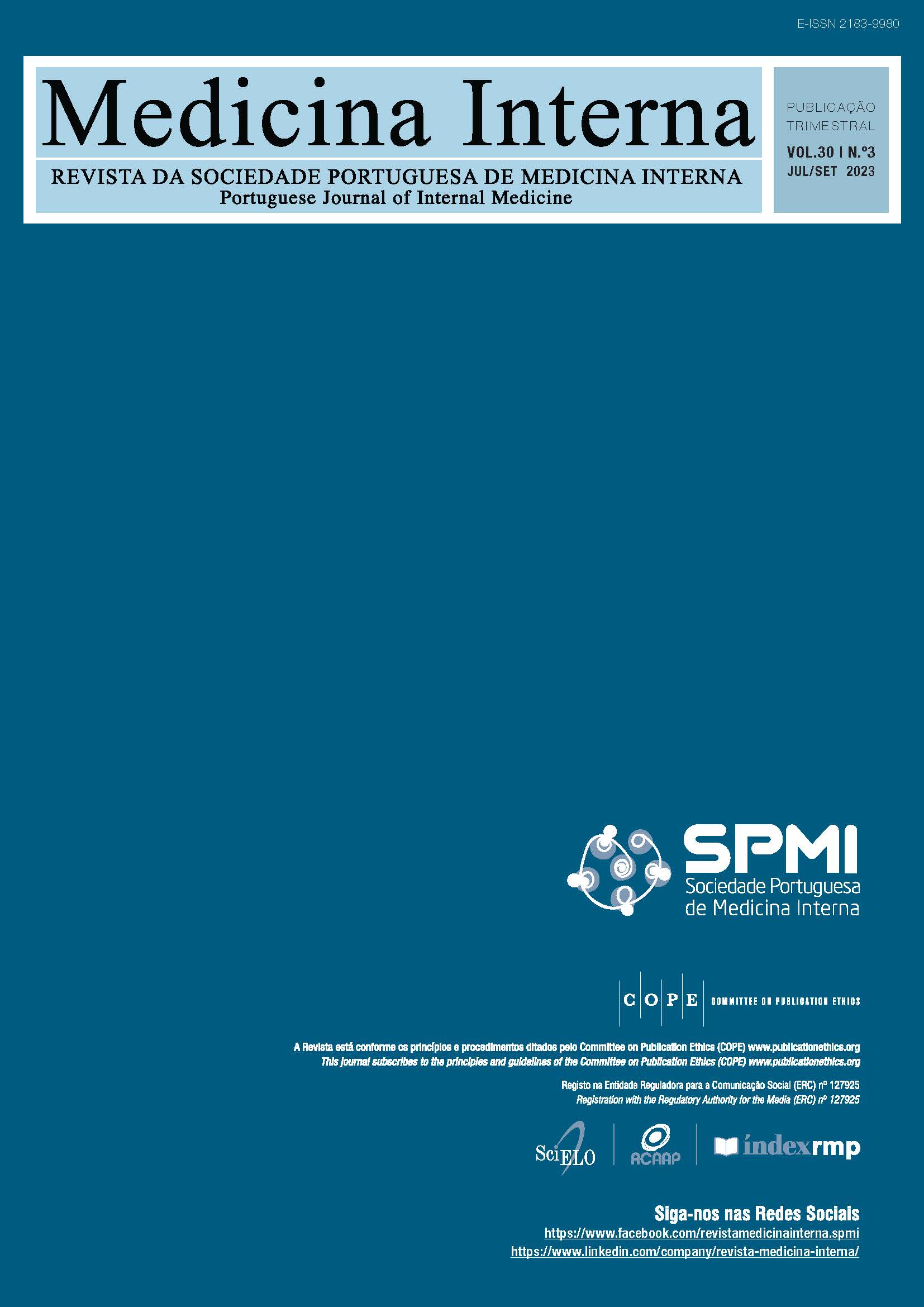Diagnostic Accuracy of Bio Fire® Film Array® Pneumonia Panel for Detection of Viral and Bacterial Pathogenski in Lower Respiratory Specimens
DOI:
https://doi.org/10.24950/rspmi.1497Keywords:
Molecular Diagnostic Techniques, Pneumonia/ diagnosis, Respiratory Tract Infections/diagnosisAbstract
Introduction: Rapid diagnostic testing for pneumonia has the presume potential to guide clinical decisions in reducing the use of broad-spectrum antibiotics. These benefits should
be dependent upon the accuracy of these test. In order to evaluate the diagnostic yield and accuracy of the BioFire® FilmArray® pneumonia panel (BFFA) for pathogens identification in lower respiratory tract specimens, we conduct this retrospective study in a intensive care unit (ICU).
Methods: In this study were included all patients (n = 104) admitted in our ICU with pneumonia who underwent BFFA test, between December 2019 and March 2021. Lower respiratory tract samples were collected and analysed simultaneously with BFPP and microbiological culture, as part of standard-of-care testing. The BFFA panel includes for 18 bacteria and 8 virus, that commonly cause pneumonia as well 7 antibiotic resistance genes, identified from tracheal aspirate or bronchial alveolar lavage (BAL) specimens.
Results: This study included 104 patients, with an average age of 62 years. The BFFA was positive in 111/125 (88%) samples. The most common bacteria detected were Staphylococcus aureus (19%), Klebsiella pneumonia (14%) and Haemophilus influenza (10%).
Discussion: There was strong concordance between BFFA and culture for detection of bacteria. In fact, most bacteria (76/106 [72%]) detected by BFFA were also identified in culture. In other hand, it is relevant that only one negative BFPP had an isolated agent in the cultural exam.
Conclusion: Real-time specimen analysis with BFFA has the potential to identify bacterial and viral pathogens and theirs resistance markers, faster than traditional culture-based methods.
In fact, the BFFA is a rapid and accurate method for detection of pathogens from lower respiratory tract infections with a 72% sensitivity and 100% specificity, in our studied population.
Downloads
References
World Health Organization. World health statistics 2021: monitoring health for SDGs, sustainable development goals. Geneva: WHO; 2021.
Kuti EL, Patel AA, Coleman CI. Impact of inappropriate antibiotic therapy on mortality in patients with ventilator-associated pneumonia and blood stream infection: a meta-analysis. J Crit Care. 2008;23:91-100. doi: 10.1016/j.jcrc.2007.08.007.
Houck PM, Bratzler DW, Nsa W, Ma A, Bartlett JG. Timing of antibiotic administration and outcomes for Medicare patients hospitalized with community-acquired pneumonia. Arch Intern Med. 2004;164:637-44. doi: 10.1001/archinte.164.6.637.
O´Neil J, editor. Tackling drug-resistant infections globally: final report and recommendations. London: Review on Antimicrobial Resistance; 2016.
Centers for Disease Control and Prevention. Antibiotic resistance treats in the United States. Atlanta: CDC; 2019.
Collins ME, Popowitch EB, Miller MB. Evaluation of a Novel Multiplex PCR Panel Compared to Quantitative Bacterial Culture for Diagnosis of Lower Respiratory Tract Infections. J Clin Microbiol. 2020;58:e02013-19. doi: 10.1128/JCM.02013-19.
BioFire Diagnostics BioFire Diagnostics. FilmArray pneumonia panel instructions for use [accessed Dez 2019] Available at: https://www.biofiredx.com/products/the-filmarray-panels/filmarray pneumonia/
European Centre for Disease Prevention and Control. Surveillance of healthcare-associated infections in intensive care units: HAI Net ICU Protocol, version 2.2. [accessed Jan 2021] Available at: https://www.ecdc. europa.eu/en/publications-data/surveillance-healthcare-associated infections-and-prevention-indicators-european
Webber DM, Wallace MA, Burnham CA, Anderson NW. Evaluation of the BioFire FilmArray Pneumonia Panel for Detection of Viral and Bacterial Pathogens in Lower Respiratory Tract Specimens in the Setting of a Tertiary Care Academic Medical Center. J Clin Microbiol. 2020;58:e00343-20. doi: 10.1128/JCM.00343-20
Downloads
Published
How to Cite
Issue
Section
Categories
License
Copyright (c) 2023 Internal Medicine

This work is licensed under a Creative Commons Attribution 4.0 International License.
Copyright (c) 2023 Medicina Interna






